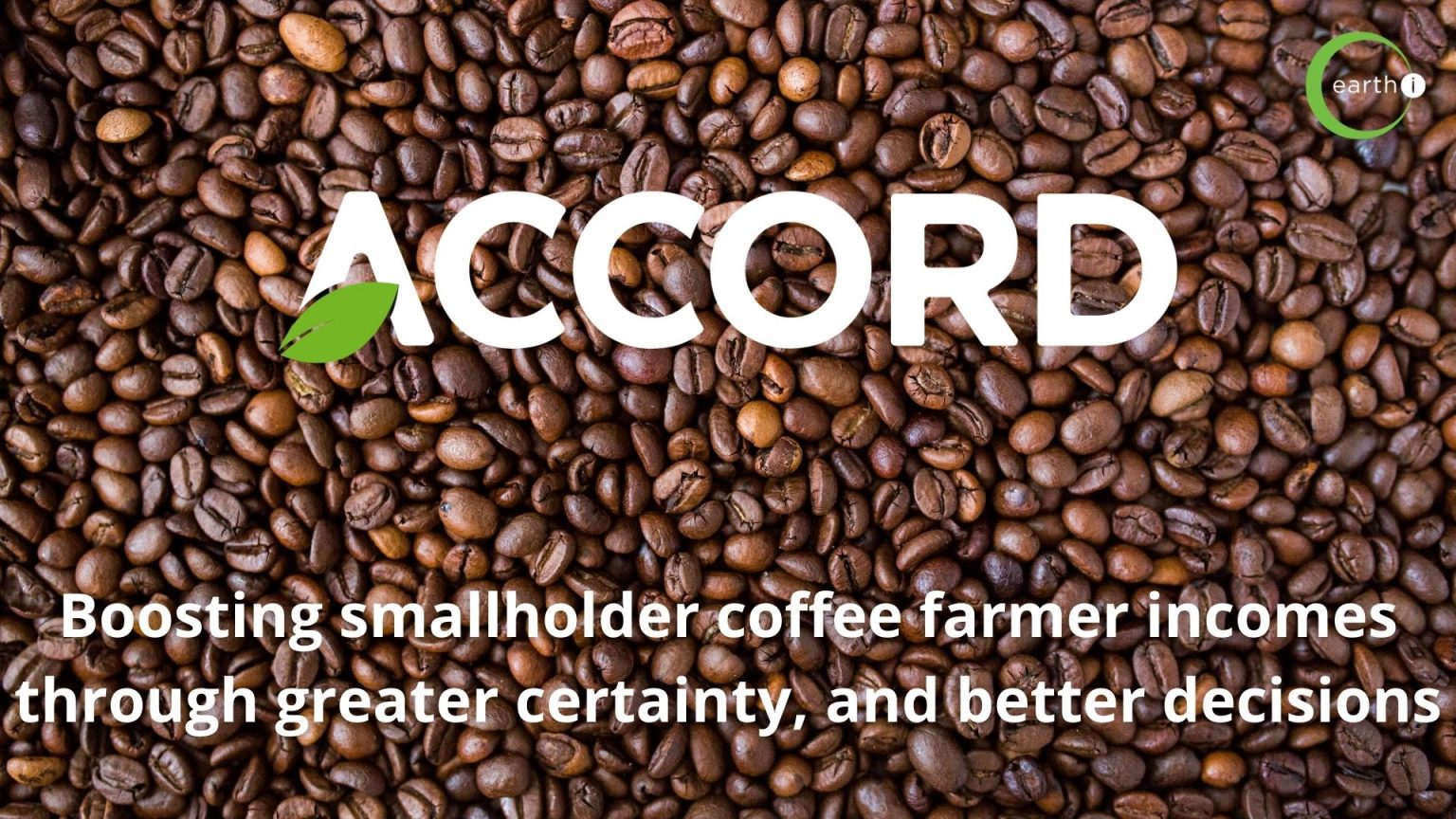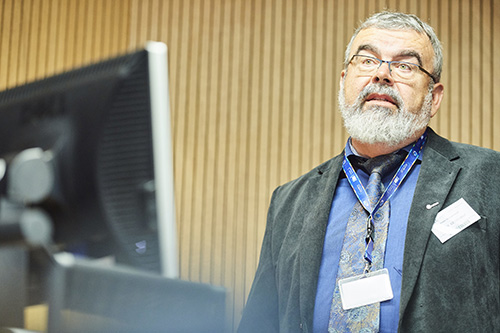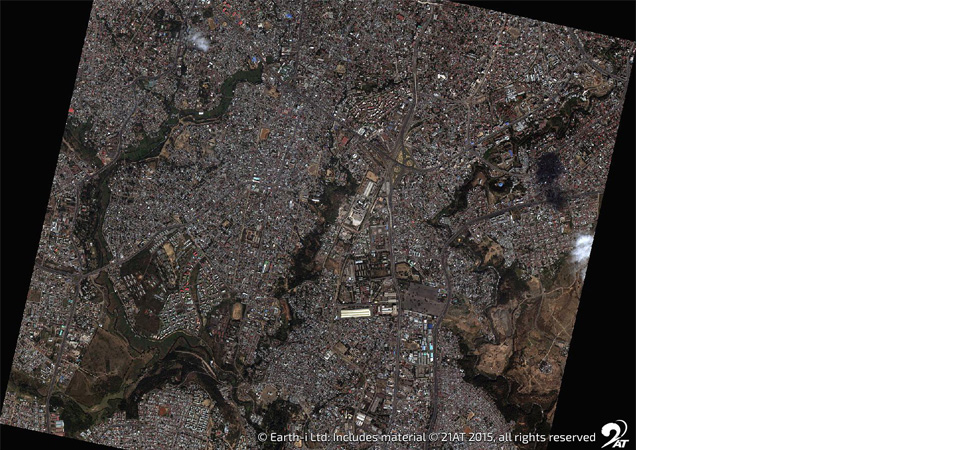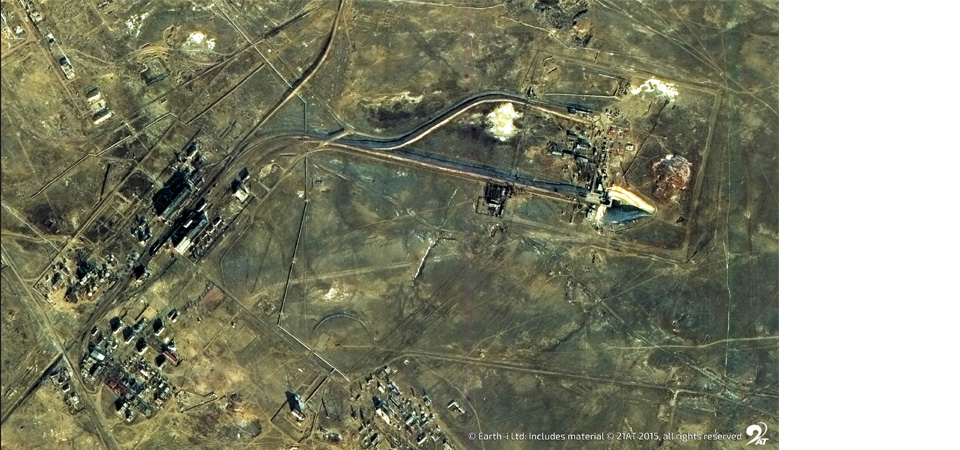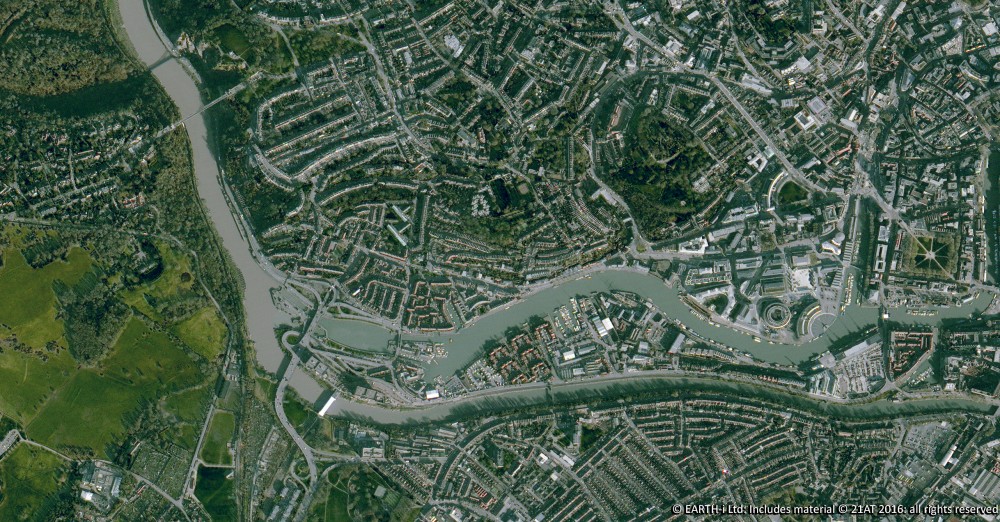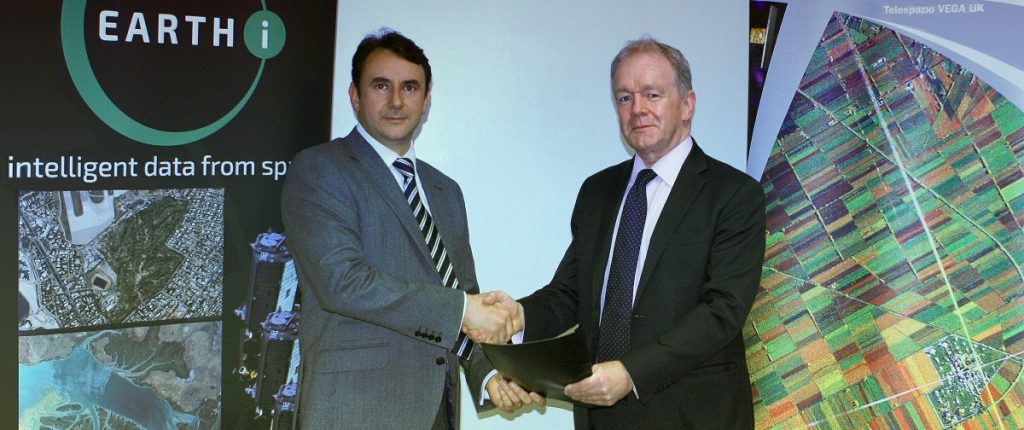Tackling sustainability in smallholder coffee farming in the face of climate change has largely been a ‘bottom-up’ effort. Achieving sustainability for the world’s smallholder farmers requires rapid development of a global ‘top-down’ approach before time runs out.
Smallholder farmers are vital for world food production and food security. Although estimates vary, recent research estimates that between 30-34% of world food supply comes from smallholder farmers (source: https://www.sciencedirect.com/science/article/pii/S2211912417301293), most often defined as farms supporting a single family with a mixture of cash crops and subsistence farming. It is further thought that around 2bn people globally depend on 570m smallholder and family farms for their livelihoods (source: http://www.fao.org/family-farming/detail/en/c/386784/), making this sector critically important as a source of jobs and income as well as for world food security.
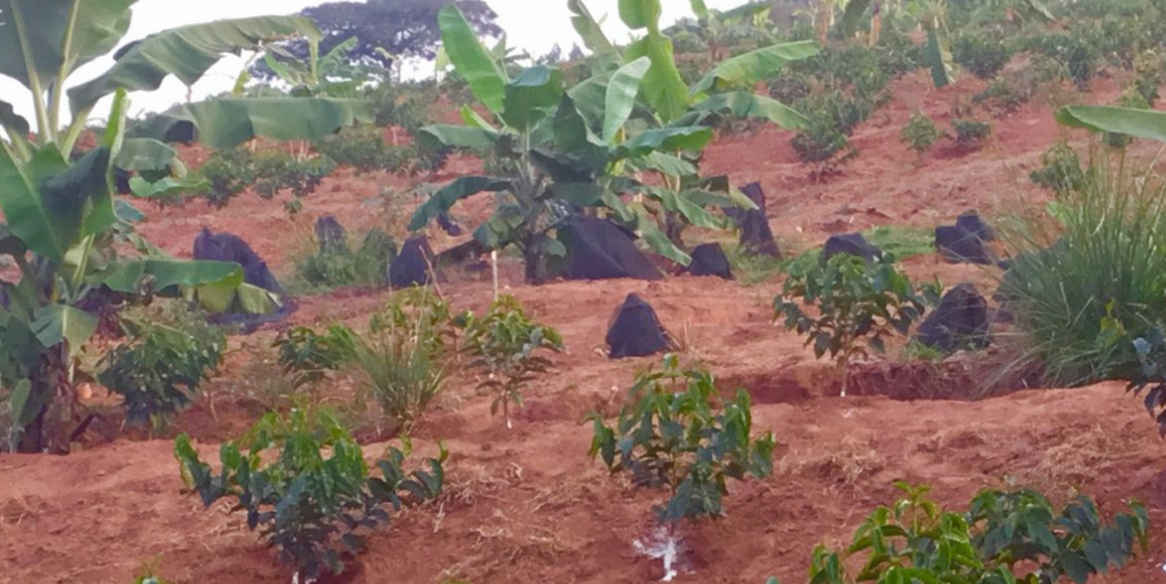
Given the importance of this sector of agriculture and the impact of climate change on global agriculture as a whole, this paper considers the challenge of implementing effective solutions for tackling the challenge. There has been an explosion of new technologies and projects testing a plethora of possible solutions, many of which are targeted at smallholder farmers. They urgently need effective, affordable and accessible answers to the challenges a rapidly warming climate brings to their farms. The results suggest that such solutions are within reach, but the key question is how to implement them at a scale and within a timeframe to secure the future for the hundreds of millions of people that rely on small scale farming for their livelihoods.
This paper offers an answer to that challenge, by focussing on the way agri-commodity supply chains work, and the power and influence of the world’s multi-national corporations in sourcing and trading these commodities. If their commercial interests can be aligned with the interest of many millions of smallholder farmers producing essential crops, then new technologies and techniques available today could come to the rescue fast enough to prevent a global crisis in smallholder farming.
Smallholders in the eye of the storm
The vast majority of smallholder farmers live and work in the world’s tropical belt, particularly in South America, Africa and Southern Asia. This puts them right on the frontline of the battle against climate change, as it is within these regions that the impact of global warming and environmental degradation is most keenly felt.
Given that the majority are also then located in developing or least developed nations, there is a perfect storm growing in this critical sector. These nations face serious challenges from high rates of poverty, particularly in rural areas amongst farming communities, and the socio-economic pressures arising from population growth. With agriculture representing a much higher proportion of GDP in these countries than developed nations in the northern hemisphere this is a matter of national economic wellbeing and security. The resilience and sustainability of their rural communities and economies is at stake.
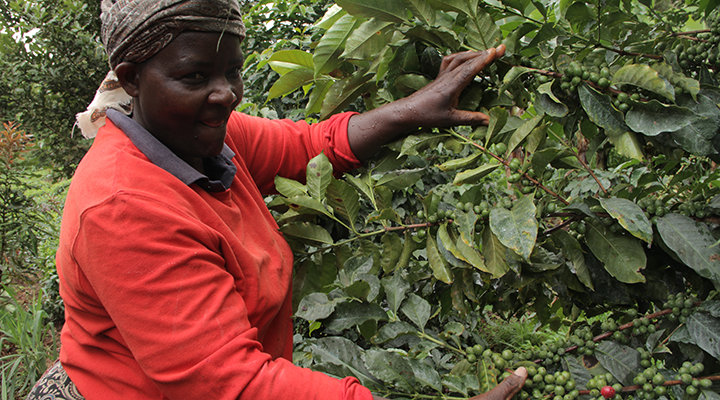
Whilst the Covid19 pandemic has grabbed the World’s attention in 2020 there is a growing global consensus that climate change is now an emergency. As we enter a new decade, the world’s leaders have the next ten years to lead or facilitate meaningful initiatives, policies and change to stop global warming in its tracks. Whatever the damage done by the pandemic in the short term, climate change and global warming represents a far bigger long-term challenge with the potential to be much more deadly (see GatesNotes – https://www.gatesnotes.com/Energy/Climate-and-COVID-19).
Smallholder farming in the tropical belt is in the eye of this storm. Global warming is bringing about unprecedented changes to the environment and the climate that impact smallholder farmers in multiple interconnected ways. Environmental degradation, unpredictable and extreme weather patterns, increasing threats from pests, disease and soil erosion are making crop cultivation and harvests much less reliable. In turn smallholder livelihoods are becoming precarious leading to socio-economic vulnerability and declining food security. The importance of this crisis to the wellbeing of humankind demands action on a global scale.
The good news is that the plight of smallholder farmers has been recognised for some time, and the previous decade has seen a myriad of initiatives to intervene in the world’s smallholder farming communities in an attempt to halt and reverse the effects of climate change. This is encouraging and a provides the foundations of knowledge and experience on which these efforts can be accelerated and expanded.
Yet the task remains enormous as well as urgent if effective solutions are to be implemented in just ten years. It must be seen as a global priority, not just a series of regional or local interventions, as sustainable food production from smallholder farmers is as much in the interests of affluent consumers in developed nations as it is in rural communities in the southern hemisphere.
Size matters to us all
The reason why is simple: many of the commodities we rely on in our daily lives are produced by smallholder farmers. Products such as coffee and chocolate rely on millions of smallholder farmers, as do a wide range of other food stuffs from beans to tomatoes. Whilst some are suitable for production on a large scale in plantations, many are difficult to produce at that scale due to the nature of the environments in which they grow best.
In any case, a widespread effort to increase the scale of production, and move away from smallholdings will in itself create new problems of environmental degradation and human impact on fragile eco-systems. There is much evidence of this already in developed nations where industrial-scale farming has seriously impacted natural environments, wildlife habitats and vital eco-systems. Their decline has in turn accelerated the negative effects of global warming as the balance of nature is disrupted so that green-house gases are no longer re-absorbed.
If we are to secure the global supply of the agri-commodities we rely upon, without further contributing to environmental degradation, then we must also work hard to secure smallholder farming. Sustainability is therefore both a global and a local imperative.
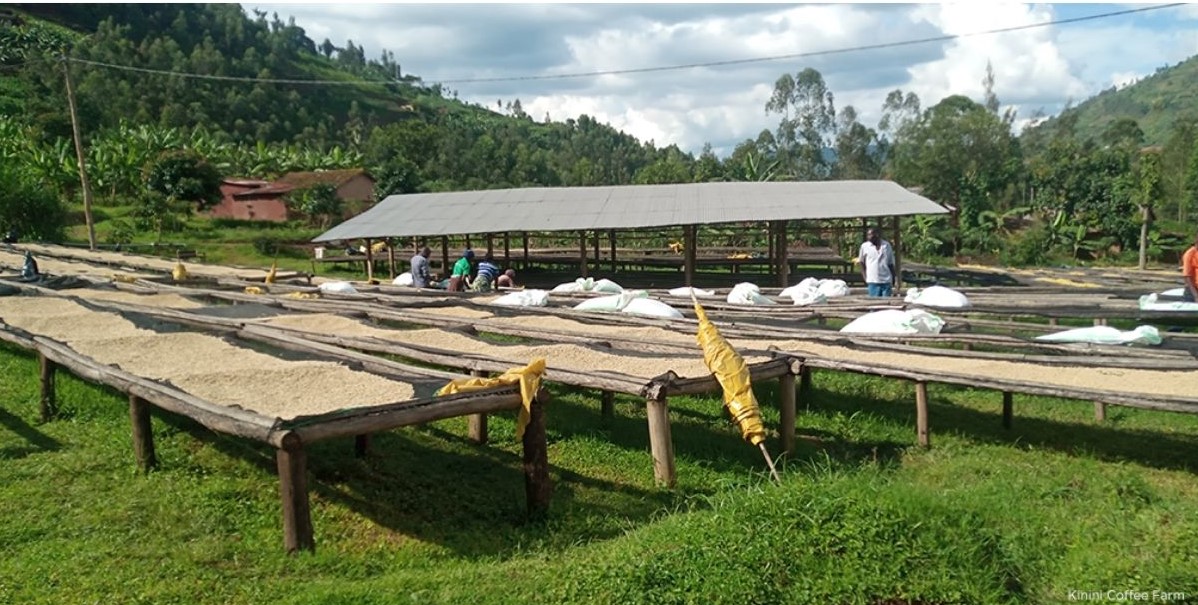
Whilst this sounds gloomy, global challenges of this nature are just that if we don’t take action. The exciting thing is that as we begin the third decade of the 21st century, we have a massive opportunity to win, and win again, in the fight against climate change and sustain that win by acting to preserve and sustain smallholder farming. If we invest in sustainable smallholder farming, we invest in sustainable rural communities. Sustainable farmers should have sustainable incomes that ensure their farms are economically viable. This provides a solution to rural poverty, a major driver of population growth and environmental degradation.
This is the sustainability challenge we must now embrace with urgency.
Both global and local
At the heart of this sustainability challenge is the need to find global solutions that can be delivered effectively in the local context. If the problem is both global and local, then the solution must be both global in its reach and local in its impact.
The last decade has seen a plethora of initiatives and projects implemented to tackle the challenge in the tropical nations most affected by climate change. Most of these have, in some shape or form, been donor-funded from either government development funds or through NGOs. Much has been learned, much has been achieved. But it is hard to escape the conclusion that we are yet to achieve the global breakthrough required to achieve the goal of sustainable smallholder farming as the norm not the exception.

Many of the initiatives are short term and necessarily exploratory as new technologies, processes and business models emerge from academia and business start-ups and innovators. Such initiatives face the critical challenge of how to scale their projects and establish commercially viable business models.
There are many reasons for this, not least that the innovations required take time, learning from experience takes time. Some things will work, some things won’t. Trial and error take time. Funds are quickly exhausted, and venture capital is impatient for returns. But time is of the essence and funding always finite. How can we speed up the process and scale up solutions to a global level so that time does not run out on the world’s smallholder farmers?
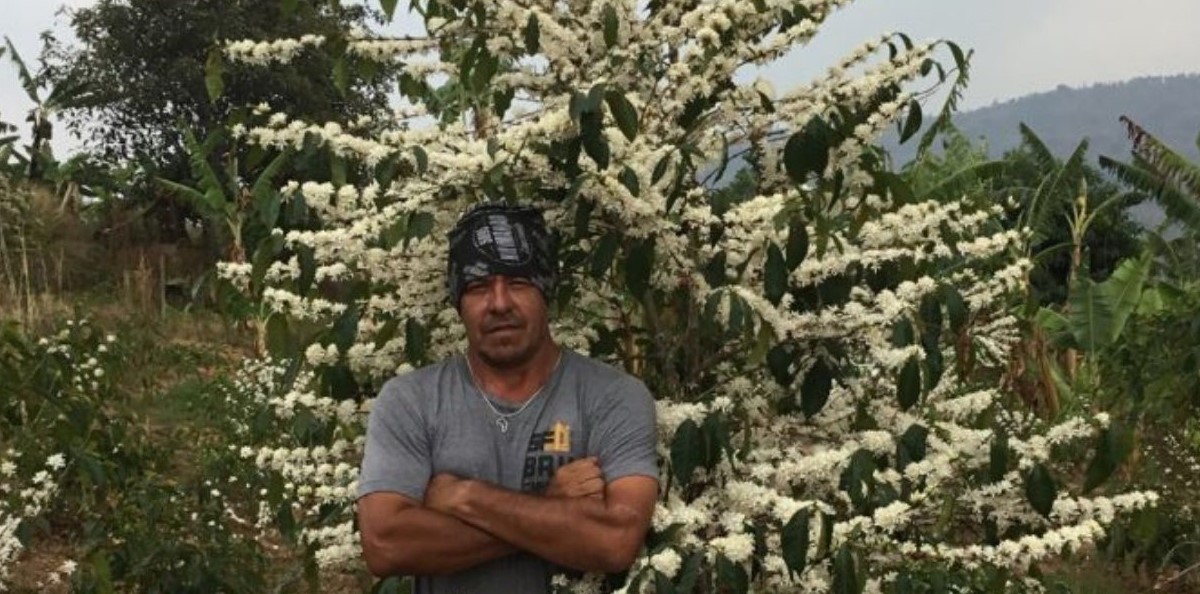
A good start in scaling a solution is to first scale the problem. It is not enough to simply know the statistics quoted at the start of this paper. 500m smallholder farmers is an impressive, but largely meaningless, number if we cannot break that down into who they are, where they are, what they grow and how much that matters to them and to global food supply.
Collating all of that data through conventional sources and methods is an immense task. It is possible to estimate numbers on regional or national bases, to segment by crop type, to derive statistics from the research done by agricultural or industry associations and NGOs. It is possible to be more granular, but it is slow, methodical, labour-intensive work that lacks the precision and timeliness to make it truly actionable.
So, why does that matter? Isn’t it true that the best work is already been done on the ground working directly with farmer communities in individual countries or regions? And that the groundwork for effective solutions is already well underway?
From the ground looking up there is hope
Indeed, it is true – the myriad of donor-funded development projects and industry initiatives referred to earlier are already working with millions of farmers in Latin America, Africa and Asia to deliver services and innovations designed to tackle climate change and build sustainability. They are working from ‘the bottom-up’, so to speak, to prove the innovations and technologies required to ensure smallholder farming is sustainable for the long term, and the impact of climate change can be overcome.
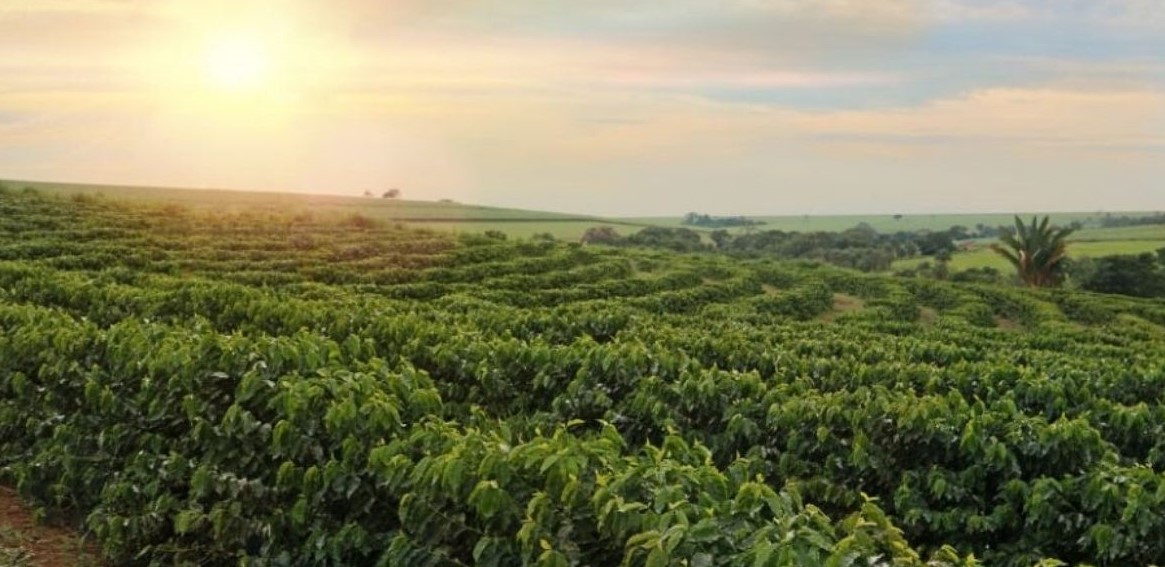
The ACCORD programme, working with around 50,000 smallholder coffee farmers in Kenya and Rwanda, is a good example. The project is funded through the UK Space Agency’s International Partnership Programme. It consists of a consortium of SME companies from the UK, Kenya and Rwanda, led by Earth-i, a UK-based pioneer of satellite data analytics and AI solutions. At the heart of the programme is the WeatherSafe platform that delivers a combination of localised weather alerts and agronomic advice to each farmer through the simple medium of SMS text messaging.
The service has proved very popular with coffee farmers and cooperatives as each farmer receives timely advice on how to manage their crops taking account of increasingly unpredictable weather patterns. This unpredictability threatens the prospect of a good harvest and increases the risk and prevalence of pests and disease. With timely advice and interventions such these threats can be mitigated, and crop yields improved.
Given that a recent study from the Kenya Coffee Platform found that over 50% of Kenyan smallholder coffee farmers do not break even, and only 17% were found to be achieving economic viability, this type of service is a crucial intervention. It promises the possibility that years of decline in Kenyan coffee production could be stabilised, even reversed, if such a service could be widely available to the country’s 500,000+ smallholder coffee farmers.
Scaling the programme to 10x its current size in Kenya is certainly possible but would require an enormous effort and resources. In the ACCORD programme each coffee field is mapped using a mobile GPS app, producing a highly accurate database of the geolocation and profile of each smallholder farmer. As these are often less than a quarter of a hectare with a couple of hundred trees, this is itself a major achievement. To scale the programme to a nationwide service available to the majority of coffee farmers would take a substantial effort in mapping all the farms, but it would be worth it given the localised, accurate and timely service that could then be delivered to farmers. If half a million coffee farmers could be empowered to combat climate change, increase crop yields and achieve economic viability the wider benefits for Kenya’s economy, prosperity and environment would be very significant.
Yet to achieve these gains would take several years of effort on the ground, requiring substantial commitment of resources, both labour and capital. Whilst it is possible, it does focus the mind on the scale of the task if we are to make rapid progress for all the world’s smallholder farmers. 500,000 coffee farmers in Kenya amounts to just 0.1% of the world’s total smallholders. Coffee is just one sector.
And, important as it is, Kenya is just one producer country. What about other countries? Other regions? Indeed, what about other smallholder grown crops beyond coffee that could benefit in the same way from this type of service, in Kenya and many other countries? The scale of the effort required to build up the service quickly becomes apparent, even though the end goal is of huge value and a significant step towards sustainability.
Scale comes at a cost – someone must write the cheque
Achieving such scale also begs the question ‘who pays?’ This is a common question circulating amongst the many sustainability projects and initiatives. They start with donor funding, achieving good proof-of-concept results in a short time, and enthusiastic adoption by recipient farmers grateful for the help on offer. But once donor-funding comes to an end, what then? How do these solutions rapidly scale? Whilst much effort is made on proving technologies and methodologies, the projects often lack the time and resources to prove commercial viability in the time available. And in any case their ‘customers’, smallholder farmers, are already struggling to achieve even a breakeven on their farms. Expecting them to fund a commercial service is, to say the least, a hard sell.
Herein lies the problem with the bottom-up approach. Whilst there are many worthwhile initiatives and projects on the ground, demonstrating and proving innovations and technology, they are local in nature, with limited reach and limited timescales (typically 1-3 years of donor-funding). This rarely proves enough time to reach commercial viability. Even those that reach a few hundred thousand farmers hit that crunch-point when funding is coming to an end and commercialisation is the required next step. At that point the question ‘who pays?’ looms large, whilst the cost and risk of scaling up to a much wider farmer base is often beyond the programme’s means.
Scaling these localised programmes and proving sustainable economics, let alone sustainable outcomes for farmers, is a major barrier to finding global solutions for smallholder farmers. Yet time to scale the best of the solutions is running short as climate action becomes ever more urgent over the coming decade.

Gloomy as that prognosis sounds, there is a solution within our grasp, and within an actionable timescale to achieve scalability and even, possibly, globalisation. The key is that we must implement a ‘top-down’ solution in addition to the existing bottom-up approach to innovation. A top-down approach means taking a global view and seeking to scale solutions to smallholder farmer support on a meaningfully global basis. It takes all the good work done to date, amongst the many ground projects, and accelerates their application on a global basis to reach the greatest number of smallholder farmers. It is the mechanism by which rapid scaling can be achieved.
It is top-down because it is based on the power, influence and resources of those who already have a global view of world agriculture. They have the vested interest required to motivate meaningful action, the financial resources to drive programmes on a global scale, and the concentration of power within the supply chains to take rapid and effective decisions.
These are the titans of the world’s agricultural industry. Whilst governments and NGOs have done much of the heavy lifting to date, and their funding has driven much of the innovation at ground level, now industry must step up and lead the effort to implement global solutions, in their own interests as well as those of smallholder farmers.
So, let us discard the gloom. There are several reasons why this top-down approach should be possible and effective within the timescale required.
Supply chains and consolidation must now work for farmers
A large proportion of agri-commodities are traded by a small number of large multi-national corporations. For example, companies such as the big four “ABCD” agri-commodity traders, ADM, Bunge, Cargill and Dreyfus, control much of the sourcing and supply of the world’s food commodities. Collectively they manage around a third of the value of the world trade in agricultural commodities, and in some specific sectors, such as grains, they dominate the trade.
These major corporations wield enormous power and influence over the world’s supply chains and food security. They also have a strong vested interest in ensuring sustainable supplies of these commodities for the future and invest time and money in a wide range of sustainability initiatives. After all, their business depends upon it in the long term.
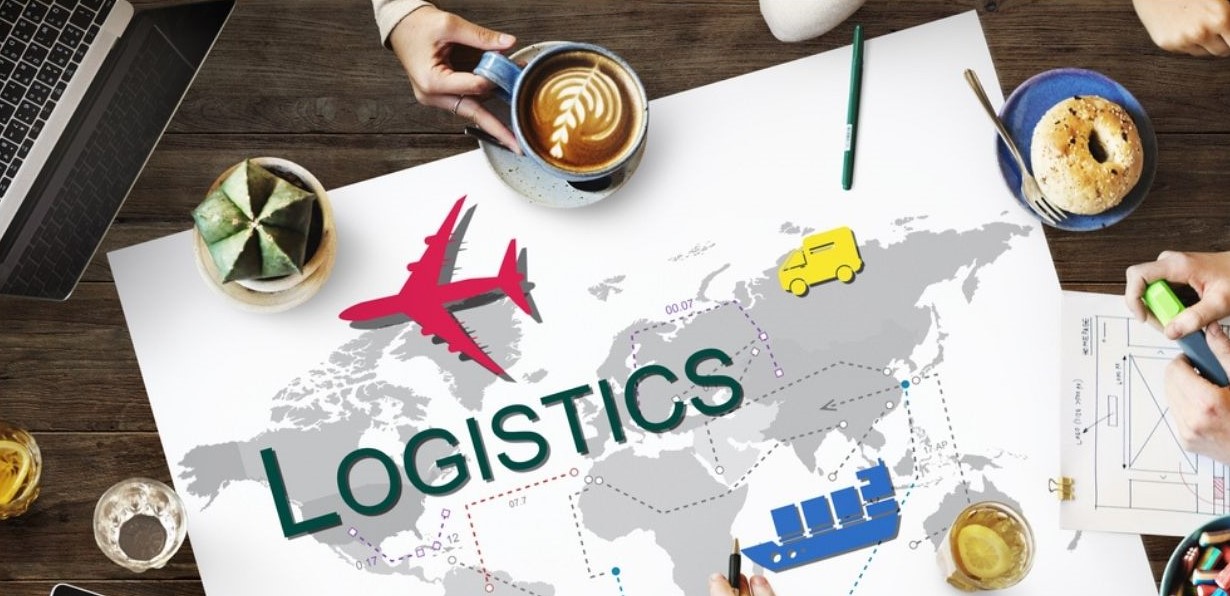
In the coffee industry a small number of major corporations, such as Nestle, Kraft, Neumann, ECOM, and Volcafe, dominate the trade in coffee. Typically, these companies run ongoing sustainability programmes, and increasingly recognise the importance of engaging directly with farmers and their communities to tackle climate change and build long-term sustainability. They have the power, the reach and the resources (particularly funding) to enable the top-down approach.
Making vertical integration a virtue
The global coffee supply chain is dominated by these trading corporations. They are heavily vertically integrated, meaning they own companies throughout the supply chain, ensuring they can secure supply right down to the farmer level. Many of the subsidiary companies they own in producer countries, work closely with smallholder farmers, offering farm extension services to support improved crop management and subsequently better crop improved yields. Many of these farm extension programmes now include services that are specifically designed to help smallholder farmers deal with the impact of climate change.
Earth Observation technology shows the way
In some cases – and this is true of our own ACCORD programme – these services are harnessing the power of Earth imaging satellites.
The Earth Observation industry has grown rapidly over the last decade, with a new generation of small optical and radar satellites launched to provide daily coverage of the Earth’s surface. With many more of these satellites to be launched over the next decade the ability to see and monitor anywhere in the world has created immense new possibilities, not least in the agricultural sector. Added to the hardware in space, collecting huge amounts of data, are rapid advances in data analytics using artificial intelligence and machine learning. The advances made in data science can now be applied to smallholder agriculture in developing and least-developed nations, and not just big agriculture in developed nations.
This leap forward in space-based technology suggests that we are not far from a truly global capacity to identify and monitor the smallholder farms and field that we depend upon for a wide variety of crops important to world food supply. The vast task of mapping many millions of small fields can be now undertaken remotely, training algorithms using machine learning to detect crop types and map field boundaries with unprecedented accuracy. This automated capability will replace the need for an army of workers required to walk field boundaries to map using GPS apps, addressing the scale of the challenge described earlier in this paper. And, crucially, to complete the task far more quickly than humans can do and repeat the task time after time to keep the database up to date.
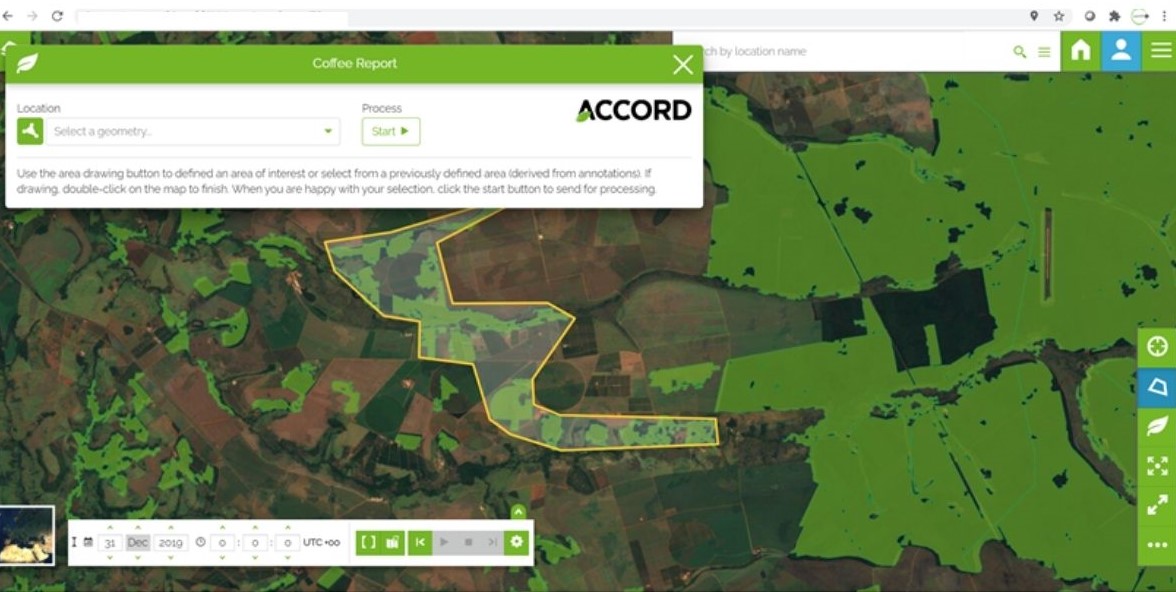
And if we can remotely map and monitor all of these small fields and their crops, we can harness the data and insights generated to support each smallholder farmer get the best from their farms. We can support measures to deal with the impact of climate change in their local area, and on their fields and crops. These benefits will be transformational, not just to the farmers themselves but also to the health and resilience of their communities and the supply chains they serve.
Commercial sustainability – an answer to ‘who pays?’
All of this comes at a real financial cost, however. As noted earlier much of the cost in developing these capabilities has been funded by governments and NGOs through R&D and aid programmes. For the benefits to become widespread, across all areas and crop types, viable business models must also be developed that support commercial sustainability. At the heart of this challenge is the recurring question ‘who pays?’
As the development, testing and proving of new technologies and data science accelerates, the cost of deployment continues to come down. Most applications within the world of smallholder farming remain relatively small in scale but a tipping point is in sight at which the ability to scale applications and support a commercially viable price is achievable.
Given that the vast majority of smallholder farmers remain in or close to relative poverty, and their costs of production are such that breaking even is often a challenge, it is unlikely that farmers can themselves fund such services. Whilst initial commercial modelling suggests the cost is low, when measured on a per farmer per year basis, the barriers to scale and widespread adoption remain too high.
Such barriers to adoption suggest that the bottom-up model is unlikely to bring about swift application of these new solutions on a global basis. The top-down model offers a faster roadmap to success because it can leverage the existing power of large multi-national corporations, their vested interest in sustainable supply chains, and most importantly their resources. They have the financial resources and the global reach necessary to accelerate the availability and application of new technologies and services for the benefit of the smallholder farmer and also for global food security.
The time for a global alliance
Before such a top-down strategy can take effect, the leadership within these large corporations must be convinced of the efficacy and benefits of such new solutions. The history of technological revolutions tells us that a few early-adopter visionaries lead the way. The rest of the industry is then likely to follow if the results are good and competitive advantage is with the first movers.
The process of industry adoption can be further accelerated if NGOs and governments continue to be closely involved, providing further seed funding (or ‘risk capital’ if you like), mitigating risk for the pioneers, plus time spent lobbying, cajoling and regulating to further encourage industry to adopt new solutions in the interests of the farmers, sooner rather than later.
Programmes such as the UK Space Agency’s International Partnership programme, are good examples of how this can work. Initial funding is supplied by government through agencies with a brief to support new technology and innovations, in partnership with business and entrepreneurs. An essential part of the agreement with government is the requirement to build into the programme a commercialisation strategy. The goal is to both prove the technology or innovation, and the make it commercially sustainable so that the impact continues and scales beyond the end of donor funding.

Following this model, a global alliance of industry, NGOs and governments could and should be formed to provide a global top-down solution coming to the aid of the world’s smallholder farmers to deal with the threat to sustainability caused by climate change. This truly would be an alliance of global interests creating win-win solutions that are urgently needed.
Technology and science are moving fast to prove and provide urgently-needed solutions. But whilst initiatives, projects and innovations are widespread they remain small in scale and too fragmented for us to say confidently that we are on the verge of a lasting and effective solution. Too many projects achieve good-enough results to indicate their solutions are viable but are then not able to scale up in time through their own resources to reach commercial viability. The top-down approach called for in this paper, is a call-to-action for industry to pro-actively engage with the innovators to take the best-performing solutions trailed and tested on the ground and use their resources to scale them quickly. A plan to implement the best solutions globally is needed. With governments and NGOs already heavily engaged on the ground, and with the umbrella of the UN SDGs already widely accepted by industry, it should not be too difficult to create the coalition of interests and the alliance of global actors required to make the top-down approach the next big step.
A decade of action
The challenge for smallholder farmers is a global one. It needs a global solution, and that requires enthusiastic adoption by the multi-national corporations that dominate the world’s agri-commodities supply chains. After a decade of development in Earth Observation technologies and data science in agriculture, the next decade must be one of adoption, scaling and deployment of the most effective solutions. This will be led by the visionaries in the supply chain companies that depend on sustainable food supply for their own futures. They will understand that commercial sustainability works hand-in-hand with sustainable farming to build a sustainable future and food security for all.
For more information on Accord
About Earth-i
Earth-i is a geospatial intelligence company using machine learning, artificial intelligence and Earth Observation data to provide unique and relevant insights, derived from diverse geospatial data, that deliver clear decision advantage for businesses, governments and other organisations.
Earth-i provides advanced analytics using automated interpretation of a range of geospatial Earth Observation data sources including colour imagery, colour video, infra-red and radar from a range of sources including satellite, drone, aerial and ground-based sensors. This data is fused with additional data sources to extract factual understanding and generate predictive insights across a range of markets such as commodities, supply chain, agriculture, infrastructure and defence.
For more information visit:
- Website: www.earthi.space
- LinkedIn: Earth-i
- Twitter: @Earthi_
To find out more please visit www.earthi.co.uk.
For more information about this press release, please contact: info@earthi.co.uk
International Partnership Programme
The International Partnership Programme (IPP) is a five-year, £30 million-per-year initiative run by the UK Space Agency. It focuses on using the UK space sector’s research and innovation strengths to deliver sustainable economic or societal benefit to developing economies around the world. IPP is part of, and is funded from, the Department for Business, Energy and Industrial Strategy’s Global Challenges Research Fund (GCRF). GCRF is a £1.5 billion fund announced by the UK Government which supports cutting-edge research and innovation on global issues affecting developing countries.

